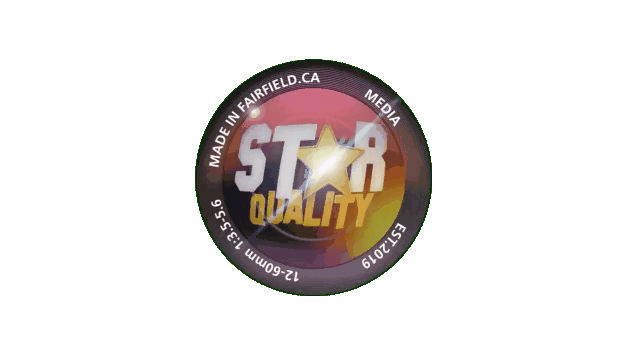California has always been a point of cultural and musical reference, and regional hip-hop has developed a fundamental role in the musical genre's formation today. From the first steps of hip-hop on the West Coast to innovator tracks that dominate the music parades, Californian hip-hop evolved uniquely, modeling the global rap scene. Let's take a look at this musical evolution.
The Beginning: The Hip-Hop Seed in the West Coast
California hip-hop began to take shape in the late 1970s and early 1980s. While New York City was the original birthplace of hip-hop, California quickly became an important hub for the genre. In its early days, West Coast hip-hop was a blend of influences, but it also reflected the laid-back lifestyle and unique climate of the region. While New York was more focused on lyrical style and rap battles, California developed a more relaxed approach, deeply connected to groove and heavy beats, with a strong influence from funk culture.
In the beginning, rap in California was strongly influenced by the funky music of the '70s, with artists like George Clinton and Funkadelic providing the sonic foundation for the region's first rappers. The Sugarhill Gang, who released the iconic 'Rapper's Delight,' also made an impact, but it was in California that hip-hop began to develop its own identity. In the '80s, rappers like The Pharcyde, Too Short, and Ice-T were pioneers, each adding their own interpretation of hip-hop through their songs and performances.
The Emergence of G-Funk: Los Angeles' Sound Revolution
The real transformation of hip-hop occurred in the '90s when G-Funk emerged as one of the most influential subgenres of global rap. The term G-Funk, or Gangsta Funk, was popularized by Dr. Dre in his seminal album The Chronic (1992). The defining characteristic of G-Funk was the fusion of funk samples with slow beats and heavy grooves, mixed with lyrics about life in the streets, violence, and the challenges faced by youth in the outskirts of Los Angeles.
G-Funk was a perfect reflection of life in Los Angeles, bringing forth a deep and melodic sound that contrasted with the frenetic and aggressive rap style of the East Coast. The use of synthesizers and the famous bassline characterized this style, creating a sound that quickly became recognized and immortalized in hits like Dr. Dre and Snoop Dogg's Nuthin' but a G Thang and Warren G and Nate Dogg's Regulate.
Despite Dr. Dre, other artists like Snoop Dogg, Warren G, and The Dog Pound have also been highlighted in this movement. They helped establish Los Angeles as the epicenter of global rap. The soft and melodic sonority of G-Funk won a base of fans all over the world, and artists like Snoop Dogg became international superstars, bringing Californian hip-hop to reach a bigger public from everywhere.
G-Funk wasn't just a musical style, but also a culture and a philosophy that influenced the entire hip-hop scene. The aesthetic of 'gangsta rap,' addressing issues like crime, street life, and drug trafficking, became a common theme in West Coast hip-hop. This genre was also tied to the search for a better life in a system that frequently neglects Black communities.
The Commercial Era of Rap and the Expansion of West Coast Hip-Hop
In the '90s, with G-Funk solidified, Californian hip-hop reached the height of its popularity. Local artists not only dominated rap charts but also expanded their audience to the mainstream. The rivalry between Tupac Shakur and The Notorious B.I.G. was one of the defining stories of rap in the '90s and represented the climax of the decade when hip-hop became part of global pop culture.
Tupac blended political resistance and social justice in his lyrics, while Snoop Dogg and Dr. Dre went viral with albums like Doggystyle (1993) and All Eyez On Me (1996), solidifying the West Coast as a rap stronghold. The '90s saw the rise of hip-hop in the media, with TV shows like Yo! MTV Raps, but were also marked by the tragic conflict between the East and West Coast, culminating in the murders of Tupac and Biggie.
The Arrival of Trap and the Metamorphosis of California Hip-Hop
In the 2000s, trap, with its electronic beats and focus on themes like materialism and excess, became popular. Californian artists like YG and Kendrick Lamar began incorporating trap into their sounds, blending influences of G-Funk and trap. Drake also helped popularize the style on the West Coast. Kendrick Lamar's album DAMN. (2017) exemplifies this fusion, maintaining a socially conscious lyrical identity.
The Future of California Hip-Hop: Between G-Funk and Trap
California hip-hop continues to evolve, with artists like Saweetie, Tyler the Creator, and Vince Staples bringing new influences from jazz, electronic, and indie music, alongside G-Funk and trap. The scene has also diversified with female rappers, like Saweetie and Doja Cat, redefining the genre in the 21st century.
The evolution of California hip-hop, from G-Funk to trap, reflects the genre's ability to adapt to social and cultural changes. G-Funk represented Los Angeles in the 90s, while trap, with its modern themes and heavy beats, has become the defining sound of contemporary hip-hop. The influence of the West Coast on hip-hop continues to transform and evolve.
 Skip to content
Skip to content

